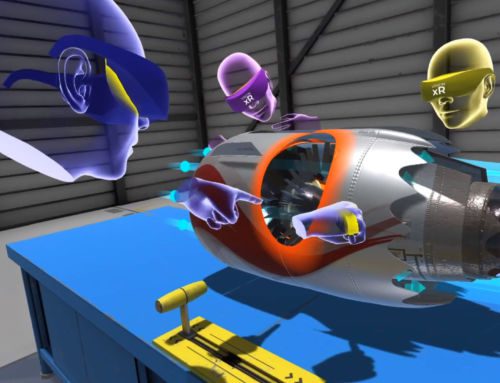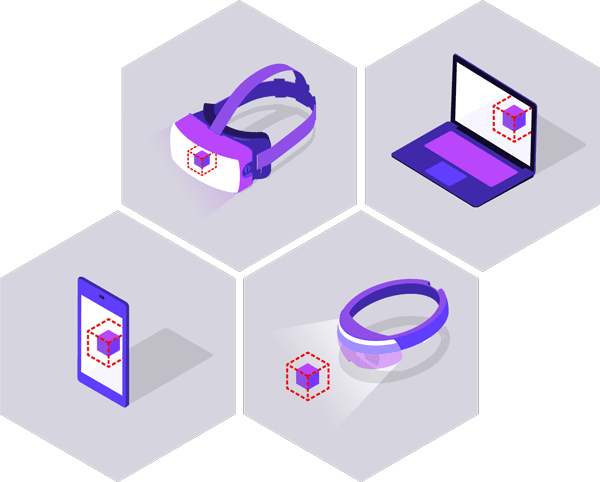Key Takeaways
Let’s face it: we’ve all been in a training session as dull as dishwater. Instead of absorbing valuable content, our minds tend to drift beyond the four walls of the classroom.
For an employer like yourself, glazed eyes and distant stares is a sure-fire sign you’re wasting your money on development. Because without understanding what engages your staff, there’s little chance they’ll show progress in the workplace.
With that said, let’s share with you 5 ways to make training more engaging in the workplace. But first…
Why is engagement important in training?
Ultimately, a learner’s level of engagement determines their commitment to training. If they find material relevant and interesting, it’s more likely they retain what’s being taught.
A stronger engagement during training usually results in deeper engaged employees. Amongst other reasons, this is because they feel more knowledgeable and confident to complete their roles.
In other cases, high engagement during training also plants the seeds for a “culture of learning” in the workplace, where employees impart newly retained knowledge to other members of staff.
For you, it means higher efficiency where employees are eager to sharpen new skills in an environment where they feel positively challenged and satisfied with their own professional development.
But what does that look like on a day-to-day basis? Well, it means fewer sick days, a happier working culture and an autonomous approach to learning. And all because you’ve put a little more thought into how to engage your staff. If you ask us, it’s a no-brainer.
6 strategies for making employee training more engaging
Rewards
We all appreciate a little acknowledgement for our efforts. As well as making us feel valued, it’s that all-important dose of assurance we’re on the road to success.
Admittedly, on the surface it’s a strategy that appears a little cheap and primitive. But there’s no denying it’s one with immediate impact on heightening engagement.
If you need a little more convincing, just look at gamification. It’s whole premise is built on reward. And it’s the reason why the LEON UK team, for example, have introduced it across 59 fast food outlets.
The result? 94% of staff participated in the training with 91% of whom stating the training allowed for a better understanding of company values. They’re convincing statistics by anyone’s standards.
Groupwork
Properly structured group work is a great way for peers to share ideas, build rapport and develop speaking and listening skills.
Above all else, it’s an opportunity for participants to listen to each other, delegate roles and work together to split complex tasks into achievable parts and steps.
Including group work is also a great way to spark new conversations which can develop knowledge and challenge individual understanding of any given topic. Give it a try.
Conversations
Tell us if you disagree, but there’s nothing more tiring than listening to a trainer talk for hours on end. Not only is it impossible to absorb everything being shared, but it also heightens the risk of participants feeling frustrated and confused.
So, what’s the alternative? Well, instead of delivering content didactically, start a conversation with your class. As well as finding out what they already know about the topic at hand, it’s a great way to continually monitor retainment and engagement as your session progresses.
Ask questions
Assessing understanding and retainment through a series of questioning techniques is a quick and easy formative assessment method.
You might choose to use a quick and snappy closed question to check trainees are paying attention. Or if you require a more elaborate response, you might ask an open question which invites learners to share their understanding on any given topic.
By involving your class, you’re turning a passive audience into an active one where everyone can learn from each other. You never know, you might even learn something yourself!
Clear communication
These days, people are more impatient than ever. So when it comes to imparting information onto others, it’s best to keep communication clear and to the point.
After all, long and tangled explanations about any given topic will only elevate the risk of losing your audience. Our advice? Say what you need to say, and not a word more.
Virtual reality
Now, you might be thinking “of course a tech company will include VR as an engagement tool”, but it’s not without good reason.
Because according to findings from a recent PwC study, v-learners reported a 40 percent increase in confidence compared to classbased learners. What’s more, those who used VR retained information four times faster than their classroom-based counterparts.
But why is that? Well, it’s all down to deeper engagement. And that’s because VR offers new and exciting opportunities to learn. Because not only does it free employees from stale classroom methods, but it also opens doors to a world of discovery with limitless autonomy.
For employees who might be resistant to change, you can start by replacing selected classroom-based modules with VR before fully integrating technology once you see the difference in results.
Closing thoughts
If you want to make training more engaging, assess your session through your learners’ eyes. Check you’ve included enough room for discussion, questions and groupwork. How will you ensure they stay active? And what measures do you have in place should a learner become disengaged?
As we mentioned in our strategies, it’s also worth considering virtual reality as a delivery method. After all, with the presence of a digital world growing more each year, it makes sense to include technology trainees will likely start to use in their day-to-day roles.
Of course, there is the question of cost when it comes to technology. But including virtual reality into your training modules might not be as expensive as you think. And it certainly isn’t as pricey as a failed training session due to lack of engagement.
If you’d like to learn more about how to include VR to improve engagement with your staff, feel free to get in touch to book a demo.
Key Takeaways
Let’s face it: we’ve all been in a training session as dull as dishwater. Instead of absorbing valuable content, our minds tend to drift beyond the four walls of the classroom.
For an employer like yourself, glazed eyes and distant stares is a sure-fire sign you’re wasting your money on development. Because without understanding what engages your staff, there’s little chance they’ll show progress in the workplace.
With that said, let’s share with you 5 ways to make training more engaging in the workplace. But first…
Why is engagement important in training?
Ultimately, a learner’s level of engagement determines their commitment to training. If they find material relevant and interesting, it’s more likely they retain what’s being taught.
A stronger engagement during training usually results in deeper engaged employees. Amongst other reasons, this is because they feel more knowledgeable and confident to complete their roles.
In other cases, high engagement during training also plants the seeds for a “culture of learning” in the workplace, where employees impart newly retained knowledge to other members of staff.
For you, it means higher efficiency where employees are eager to sharpen new skills in an environment where they feel positively challenged and satisfied with their own professional development.
But what does that look like on a day-to-day basis? Well, it means fewer sick days, a happier working culture and an autonomous approach to learning. And all because you’ve put a little more thought into how to engage your staff. If you ask us, it’s a no-brainer.
6 strategies for making employee training more engaging
Rewards
We all appreciate a little acknowledgement for our efforts. As well as making us feel valued, it’s that all-important dose of assurance we’re on the road to success.
Admittedly, on the surface it’s a strategy that appears a little cheap and primitive. But there’s no denying it’s one with immediate impact on heightening engagement.
If you need a little more convincing, just look at gamification. It’s whole premise is built on reward. And it’s the reason why the LEON UK team, for example, have introduced it across 59 fast food outlets.
The result? 94% of staff participated in the training with 91% of whom stating the training allowed for a better understanding of company values. They’re convincing statistics by anyone’s standards.
Groupwork
Properly structured group work is a great way for peers to share ideas, build rapport and develop speaking and listening skills.
Above all else, it’s an opportunity for participants to listen to each other, delegate roles and work together to split complex tasks into achievable parts and steps.
Including group work is also a great way to spark new conversations which can develop knowledge and challenge individual understanding of any given topic. Give it a try.
Conversations
Tell us if you disagree, but there’s nothing more tiring than listening to a trainer talk for hours on end. Not only is it impossible to absorb everything being shared, but it also heightens the risk of participants feeling frustrated and confused.
So, what’s the alternative? Well, instead of delivering content didactically, start a conversation with your class. As well as finding out what they already know about the topic at hand, it’s a great way to continually monitor retainment and engagement as your session progresses.
Ask questions
Assessing understanding and retainment through a series of questioning techniques is a quick and easy formative assessment method.
You might choose to use a quick and snappy closed question to check trainees are paying attention. Or if you require a more elaborate response, you might ask an open question which invites learners to share their understanding on any given topic.
By involving your class, you’re turning a passive audience into an active one where everyone can learn from each other. You never know, you might even learn something yourself!
Clear communication
These days, people are more impatient than ever. So when it comes to imparting information onto others, it’s best to keep communication clear and to the point.
After all, long and tangled explanations about any given topic will only elevate the risk of losing your audience. Our advice? Say what you need to say, and not a word more.
Virtual reality
Now, you might be thinking “of course a tech company will include VR as an engagement tool”, but it’s not without good reason.
Because according to findings from a recent PwC study, v-learners reported a 40 percent increase in confidence compared to classbased learners. What’s more, those who used VR retained information four times faster than their classroom-based counterparts.
But why is that? Well, it’s all down to deeper engagement. And that’s because VR offers new and exciting opportunities to learn. Because not only does it free employees from stale classroom methods, but it also opens doors to a world of discovery with limitless autonomy.
For employees who might be resistant to change, you can start by replacing selected classroom-based modules with VR before fully integrating technology once you see the difference in results.
Closing thoughts
If you want to make training more engaging, assess your session through your learners’ eyes. Check you’ve included enough room for discussion, questions and groupwork. How will you ensure they stay active? And what measures do you have in place should a learner become disengaged?
As we mentioned in our strategies, it’s also worth considering virtual reality as a delivery method. After all, with the presence of a digital world growing more each year, it makes sense to include technology trainees will likely start to use in their day-to-day roles.
Of course, there is the question of cost when it comes to technology. But including virtual reality into your training modules might not be as expensive as you think. And it certainly isn’t as pricey as a failed training session due to lack of engagement.
If you’d like to learn more about how to include VR to improve engagement with your staff, feel free to get in touch to book a demo.































